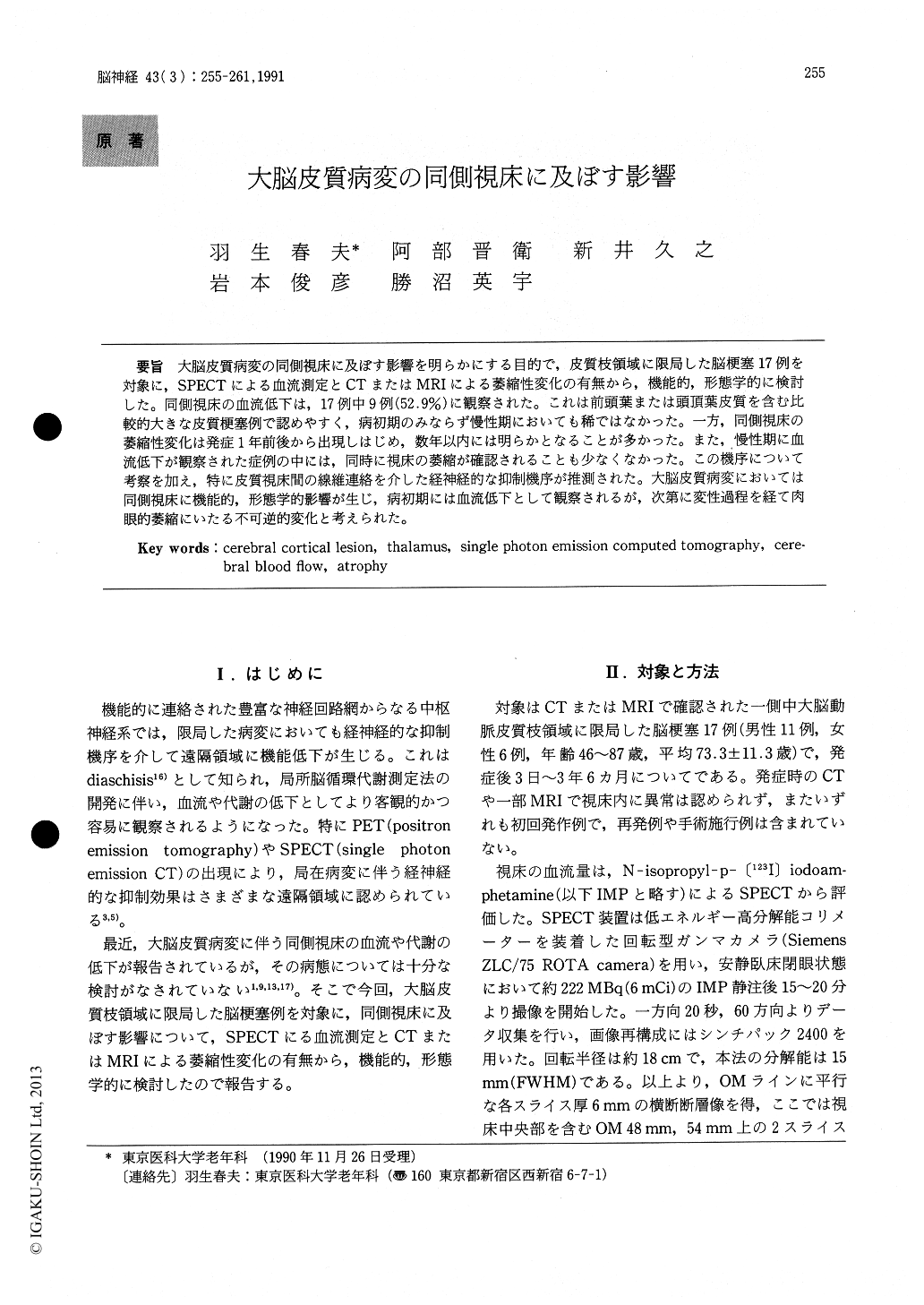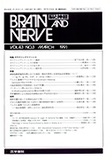Japanese
English
- 有料閲覧
- Abstract 文献概要
- 1ページ目 Look Inside
大脳皮質病変の同側視床に及ぼす影響を明らかにする目的で,皮質枝領域に限局した脳梗塞17例を対象に,SPECTによる血流測定とCTまたはMRIによる萎縮性変化の有無から,機能的,形態学的に検討した。同側視床の血流低下は,17例中9例(52.9%)に観察された。これは前頭葉または頭頂葉皮質を含む比較的大きな皮質梗塞例で認めやすく,病初期のみならず慢性期においても稀ではなかった。一方,同側視床の萎縮性変化は発症1年前後から出現しはじめ,数年以内には明らかとなることが多かった。また,慢性期に血流低下が観察された症例の中には,同時に視床の萎縮が確認されることも少なくなかった。この機序について考察を加え,特に皮質視床間の線維連絡を介した経神経的な抑制機序が推測された。大脳皮質病変においては同側視床に機能的,形態学的影響が生じ,病初期には血流低下として観察されるが,次第に変性過程を経て肉眼的萎縮にいたる不可逆的変化と考えられた。
An injury to the central nervous system causes a focal logical disturbance, and further may affect theblood flow, metabolism, and function of other brain regions. Recent studies using PET or SPECT have demonstrated that impairment of regional hemodynamics or metabolism in cerebrovascular disease involves not only the site of the lesion itself but also more remote areas. Although depression of the metabolism of the ipsilateral thalamus in patients with cerebral cortical lesions has been shown by PET study, the pathophysiological impli-cations of this remain unclear. The functional and morphological effects of cortical infarcts on the ipsilateral thalamus were studied by assessment of cerebral blood flow using 123I-IMP SPECT and by determining atrophic changes on CT or MRI.
Nine out of 17 patients with cortical infarcts showed hypoperfusion of the ipsilateral thalamus, especially patients with larger infarcts involving the frontal or parietal cortex. Thalamic hypoperfusion persisted from early after the insult to several months or even years later. In addition, atrophy of the ipsilateral thalamus was not uncommon follow-ing larger cortical infarcts. This tended to be evi-dent about 1 year after the infarct, and progressed over several years. Furthermore, atrophic changes in the thalamus was often demonstrated in such patients as hypoperfusion in the later stages.
Thus, cortical lesions had functional and mor-phological effects on the ipsilateral thalamus rang-ing from early hypoperfusion to later irreversible atrophic changes. The pathophysiological mecha-nism involved was suggested to be disruption of the interactive neuronal systems between the cerebral cortex and the thalamus, leading to progressive and irreversible degeneration of the thalamus.

Copyright © 1991, Igaku-Shoin Ltd. All rights reserved.


